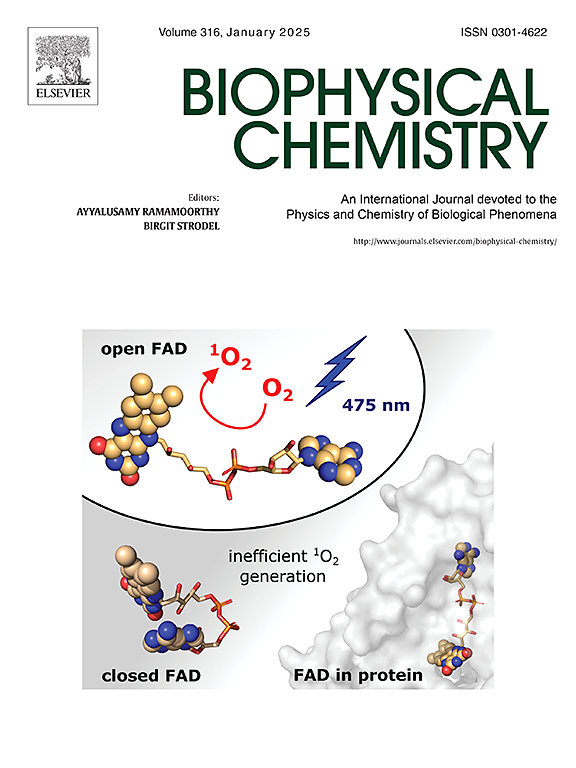Modulating the pH-activity profile of the glucose isomerase from Thermotoga marimita by introducing positively and negatively charged residues
IF 2.2
3区 生物学
Q2 BIOCHEMISTRY & MOLECULAR BIOLOGY
引用次数: 0
Abstract
Glucose isomerase is generally used in the industrial production of high-fructose corn syrup, and a heat- and acid-resistant glucose isomerase is preferred. However, most glucose isomerases exhibit low activity or inactivation at low pH. In this study, we demonstrated that two combination mutants formed by introducing positive and negative charges near the active site and on the surface of the enzyme demonstrated a successful reduction in the optimal pH and increase in the specific activity of glucose isomerase from Thermotoga maritima (TMGI). Thirteen residues, eight surface amino acids and five near the vicinity of active sites, were selected by introducing positively charged residues near the active site (mutant E237R/N298K/N337R) and negatively charged residues at the enzyme surface (mutant R112E/K220E) and were site-mutated on the basis of computational analysis. In mutants E237R/N298K/N337R and R112E/K220E, there was a decrease in the optimal pH of the glucose isomerase from 7.0 to 6.0 and 5.5, respectively, and an increase in the optimal temperature of E237R/N298K/N337R from 95 °C to 100 °C. At pH 5.5 and pH 6.0, the specific activities of R112E/K220E and E237R/N298K/N337R were 2.81 and 1.79 times greater than that of the wild-type enzyme, respectively, and their thermostabilities were greater than that of TMGI. Therefore, these two mutants (E237R/N298K/N337R and R112E/K220E) have great potential for use in the industrial production of high-fructose corn syrup. Moreover, glucose isomerase was expressed in Pichia pastoris, which demonstrated that the high expression and secretion capacity of Pichia pastoris could be used to reduce the production cost of high-fructose corn syrup.
通过引入带正电荷和负电荷的残基来调节热藓糖异构酶的ph -活性谱。
葡萄糖异构酶一般用于高果糖玉米糖浆的工业生产,首选耐热耐酸的葡萄糖异构酶。然而,大多数葡萄糖异构酶在低pH下表现出低活性或失活。在本研究中,我们证明了通过在活性位点附近和酶表面引入正电荷和负电荷形成的两个组合突变体,成功地降低了海洋热藻(Thermotoga martima, TMGI)葡萄糖异构酶的最佳pH值,提高了其比活性。通过在活性位点附近引入正电荷残基(突变体E237R/N298K/N337R)和在酶表面引入负电荷残基(突变体R112E/K220E),选择13个残基,其中8个表面氨基酸和5个靠近活性位点的氨基酸,并在计算分析的基础上进行位点突变。在突变体E237R/N298K/N337R和R112E/K220E中,葡萄糖异构酶的最适pH分别从7.0降低到6.0和5.5,E237R/N298K/N337R的最适温度从95℃提高到100℃。在pH 5.5和pH 6.0条件下,R112E/K220E和E237R/N298K/N337R的比活性分别是野生型酶的2.81倍和1.79倍,其热稳定性高于TMGI。因此,这两个突变体(E237R/N298K/N337R和R112E/K220E)在高果糖玉米糖浆的工业生产中具有很大的应用潜力。此外,葡萄糖异构酶在毕赤酵母中也有表达,说明毕赤酵母的高表达和分泌能力可用于降低高果糖玉米糖浆的生产成本。
本文章由计算机程序翻译,如有差异,请以英文原文为准。
求助全文
约1分钟内获得全文
求助全文
来源期刊

Biophysical chemistry
生物-生化与分子生物学
CiteScore
6.10
自引率
10.50%
发文量
121
审稿时长
20 days
期刊介绍:
Biophysical Chemistry publishes original work and reviews in the areas of chemistry and physics directly impacting biological phenomena. Quantitative analysis of the properties of biological macromolecules, biologically active molecules, macromolecular assemblies and cell components in terms of kinetics, thermodynamics, spatio-temporal organization, NMR and X-ray structural biology, as well as single-molecule detection represent a major focus of the journal. Theoretical and computational treatments of biomacromolecular systems, macromolecular interactions, regulatory control and systems biology are also of interest to the journal.
文献相关原料
公司名称
产品信息
麦克林
Ampicillin
麦克林
Ampicillin
 求助内容:
求助内容: 应助结果提醒方式:
应助结果提醒方式:


